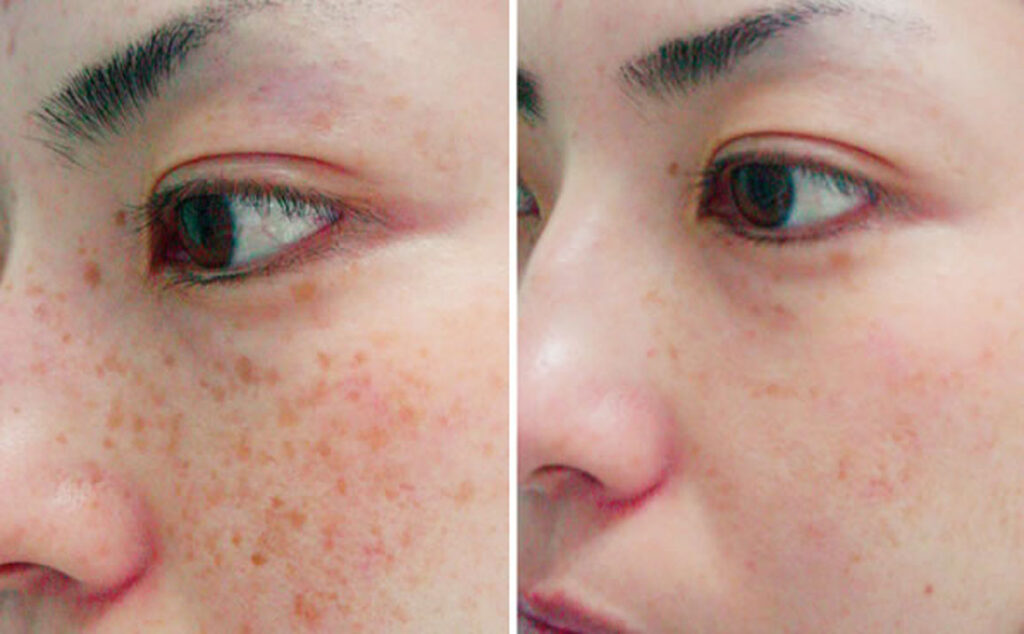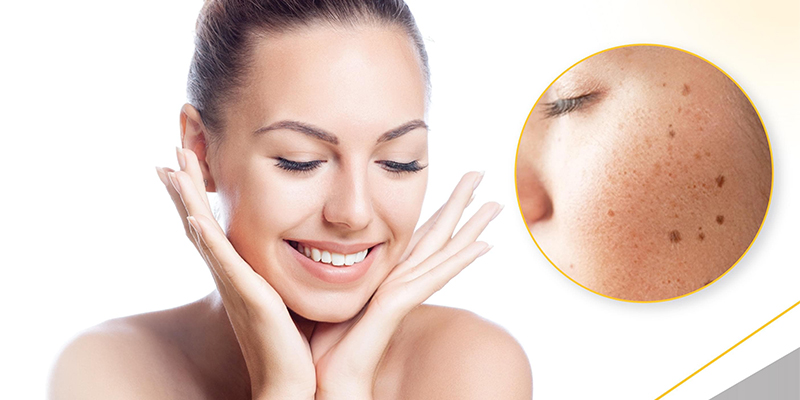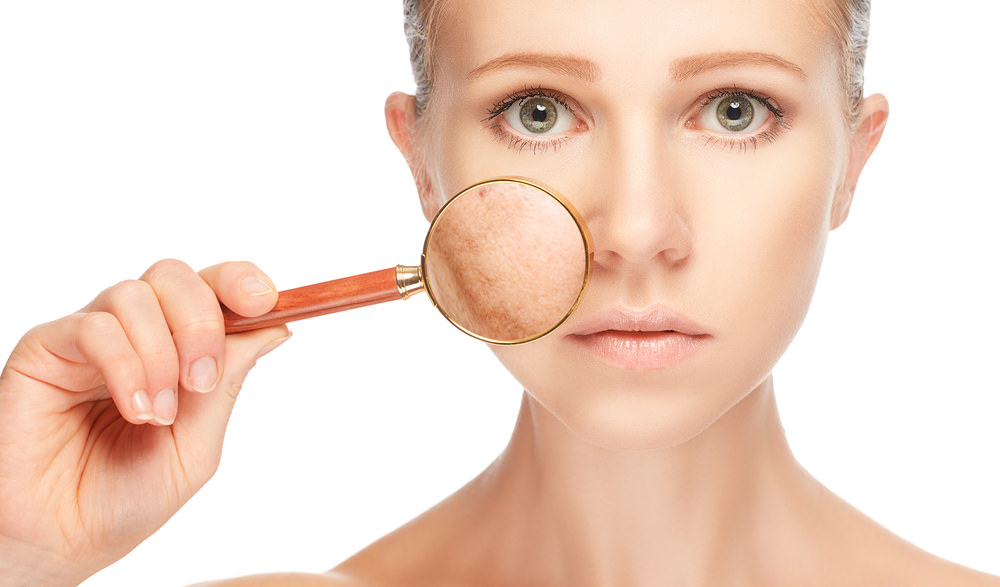Ah, hyperpigmentation – the nemesis of many skincare enthusiasts!
If you’re like me and have dealt with those pesky dark spots and uneven skin tone, you know the struggle all too well.
But fear not, my friends!
Today, we’re diving into the world of hyperpigmentation treatment and exploring the topic of skin lightening.
So, grab your magnifying mirror and let’s get started on our quest for a more even complexion!
Understanding Hyperpigmentation: The Battle Begins
Hyperpigmentation occurs when certain areas of the skin produce excess melanin, resulting in dark patches or spots.
This can be caused by various factors, such as exposure to the sun, hormonal changes, acne scars, or inflammation.
While it’s a common skin concern, it doesn’t make it any less frustrating!
Hyperpigmentation, or dark spots on the skin, is a common skin concern that many individuals desire remedies for.
Commonly affecting the face, neck, and hands, these dark patches can impact confidence and quality of life.
However, through understanding their causes and using safe and effective treatments, hyperpigmentation can often be reduced over time.
Hyperpigmentation occurs when there is an overproduction of melanin, the pigment that gives skin its color.
It has numerous possible triggers, including sun exposure, pregnancy, genetics, hormonal changes, and skin injuries or inflammation like from acne or irritation.
Areas of the skin that experience darker pigmentation may appear brown, gray, or dark black.
For treating existing pigmented lesions, topical skin lightening ingredients are the most popular option when used appropriately.
Hydroquinone targets melanin production and has been considered the gold standard agent for decades when used short-term under supervision.
However, alternatives like kojic acid, licorice root extract, vitamin C, and azelaic acid have also shown efficacy.
Lasers and light therapies provide another choice for hyperpigmentation concerns through selective photothermolysis.
Pulsed dye laser (PDL), intense pulsed light (IPL), and picosecond lasers target specific wavelengths of light absorbed by melanin to break it up safely.
A series of 4-6 treatments 2-4 weeks apart is usually needed, with considerable improvement seen in most cases.
For preventative measures, broad spectrum SPF 30+ sunscreen daily is key to shield skin from the sun’s worsening effects on pigmentation over time.
Avoiding sun exposure particularly between 10 AM – 2 PM when UV rays are strongest is also prudent.
Exfoliating regularly with gentle cleansers or salicylic acid help slough away darkened surface skin cells quicker.
Naturally derived ingredients such as aloe vera, turmeric, licorice root, and niacinamide can provide some dietary and topical support as antioxidants and skin-soothers.

However, dedicated over-the-counter or prescription hydroquinone and other proven bleaching agents deliver the most clinically tested lightening potency when used correctly.
With diligent SPF protection, appropriate ingredient selection, and patience during treatment duration, people from varied skin tones can considerably clarify their complexion and regain confidence through addressing hyperpigmentation concerns.
Consulting a board-certified dermatologist is wise for diagnosis and guidance with any skin lightening regimen.
The Quest for a Brighter Complexion: Skin Lightening to the Rescue
Skin lightening, or depigmentation, is the process of reducing the production of melanin in the skin to achieve a more even and brighter complexion.
It’s important to note that skin lightening should always be approached with caution and a focus on overall skin health.
Skin lightening, also known as skin bleaching or skin whitening, refers to the practice of using products or treatments to lighten the skin tone or reduce the appearance of hyperpigmentation, dark spots, or uneven skin tone.

It is a cosmetic procedure that aims to achieve a lighter complexion or a more even skin tone.
There are various reasons why individuals may choose to lighten their skin.
Some people may have hyperpigmentation issues caused by sun damage, acne scars, or hormonal changes, while others may desire a lighter complexion due to cultural or societal beauty standards.
It’s important to note that skin lightening is a personal choice, and individuals should make informed decisions based on their own preferences and desires.
There are different methods and products available for skin lightening.
These can include topical creams (Meladerm reviews), lotions, serums, or soaps that contain ingredients known for their skin lightening properties.
Common ingredients found in these products include hydroquinone, kojic acid, arbutin, vitamin C, niacinamide, and licorice extract.
These ingredients work by inhibiting the production of melanin, the pigment responsible for skin color, thereby lightening the skin tone.
It’s crucial to approach skin lightening with caution and prioritize safety.
Some products may contain harsh or potentially harmful ingredients, such as mercury or steroids, which can have adverse effects on the skin and overall health.
It’s important to choose products from reputable brands and consult with a dermatologist or skincare professional for personalized recommendations.
It’s also important to note that skin lightening should be approached responsibly and with realistic expectations.
Achieving a lighter complexion or reducing the appearance of hyperpigmentation takes time and consistent use of the appropriate products.
It’s essential to follow the instructions provided with the products and avoid overuse, as excessive or prolonged use of certain ingredients can lead to skin sensitivity, irritation, or other adverse effects.
Furthermore, it’s crucial to prioritize overall skin health and well-being.
Maintaining a healthy skincare routine that includes regular cleansing, moisturizing, and sun protection is essential for maintaining the health and appearance of the skin.
Sunscreen is particularly important, as exposure to the sun’s harmful UV rays can worsen hyperpigmentation and dark spots.
In conclusion, skin lightening refers to the practice of using products or treatments to lighten the skin tone or reduce the appearance of hyperpigmentation.
It is a personal choice that should be approached responsibly and with realistic expectations.
Prioritizing safety, choosing reputable products, and maintaining overall skin health are essential aspects of any skin lightening regimen.
Let’s explore some popular ingredients and methods used in the battle against hyperpigmentation.

Common Treatment Options for Hyperpigmentation
Hydroquinone: The Heavy-Hitter
Hydroquinone is a well-known ingredient in the world of skin lightening.
It works by inhibiting the enzyme responsible for melanin production, thus reducing the appearance of dark spots.
However, it’s crucial to use hydroquinone under the guidance of a dermatologist, as it can have side effects and should not be used for extended periods.
Vitamin C: The Brightening Champ
Vitamin C is a powerhouse ingredient when it comes to brightening the skin.
It inhibits the production of melanin, while also providing antioxidant protection against environmental damage.
Look for serums or creams containing stable forms of vitamin C and incorporate them into your skincare routine for a radiant boost!
Retinoids: The Exfoliating Warriors
Retinoids, such as retinol or tretinoin, are not only excellent for reducing fine lines and wrinkles but also for tackling hyperpigmentation.
They work by increasing cell turnover and promoting the shedding of pigmented skin cells, revealing a brighter and more even complexion.
Start with a low concentration and gradually increase as your skin adjusts.
Natural Remedies: The Gentle Allies
If you prefer a more natural approach, there are several ingredients that have been shown to have skin lightening properties.
These include licorice extract, kojic acid, niacinamide, and arbutin.
Look for skincare products that contain these ingredients and incorporate them into your routine for a gentle yet effective brightening effect.
Remember, Consistency is Key!
Achieving a more even and brighter complexion takes time and consistency.
Incorporate your chosen skin lightening methods into your daily skincare routine and be patient.
Results may not be immediate, but with continued use, you’ll start to notice those dark spots fading away, revealing a more radiant you!
Sun Protection: The Unsung Hero
While skin lightening methods can help fade hyperpigmentation, it’s crucial to remember that prevention is just as important.
Protecting your skin from harmful UV rays is key to preventing further darkening and maintaining the results you’ve worked so hard to achieve.
Wear a broad-spectrum sunscreen with at least SPF 30 daily, and don’t forget to reapply!
Consult with a Skincare Professional
If you’re dealing with stubborn or severe hyperpigmentation, it’s always a good idea to consult with a skincare professional or dermatologist.
They can assess your specific skin concerns and recommend the best course of action for you.
Remember, they’re the experts, and their guidance can be invaluable on your journey to a brighter complexion.
Embrace Your Beautiful Skin – Dark Spots and All!
While the quest for a more even complexion can be challenging, it’s important to remember that your skin is beautiful, regardless of its shade or imperfections.
Embrace your unique beauty, and remember that skincare is about self-care and self-love.
So, take care of your skin, be patient with the process, and let your inner radiance shine through!